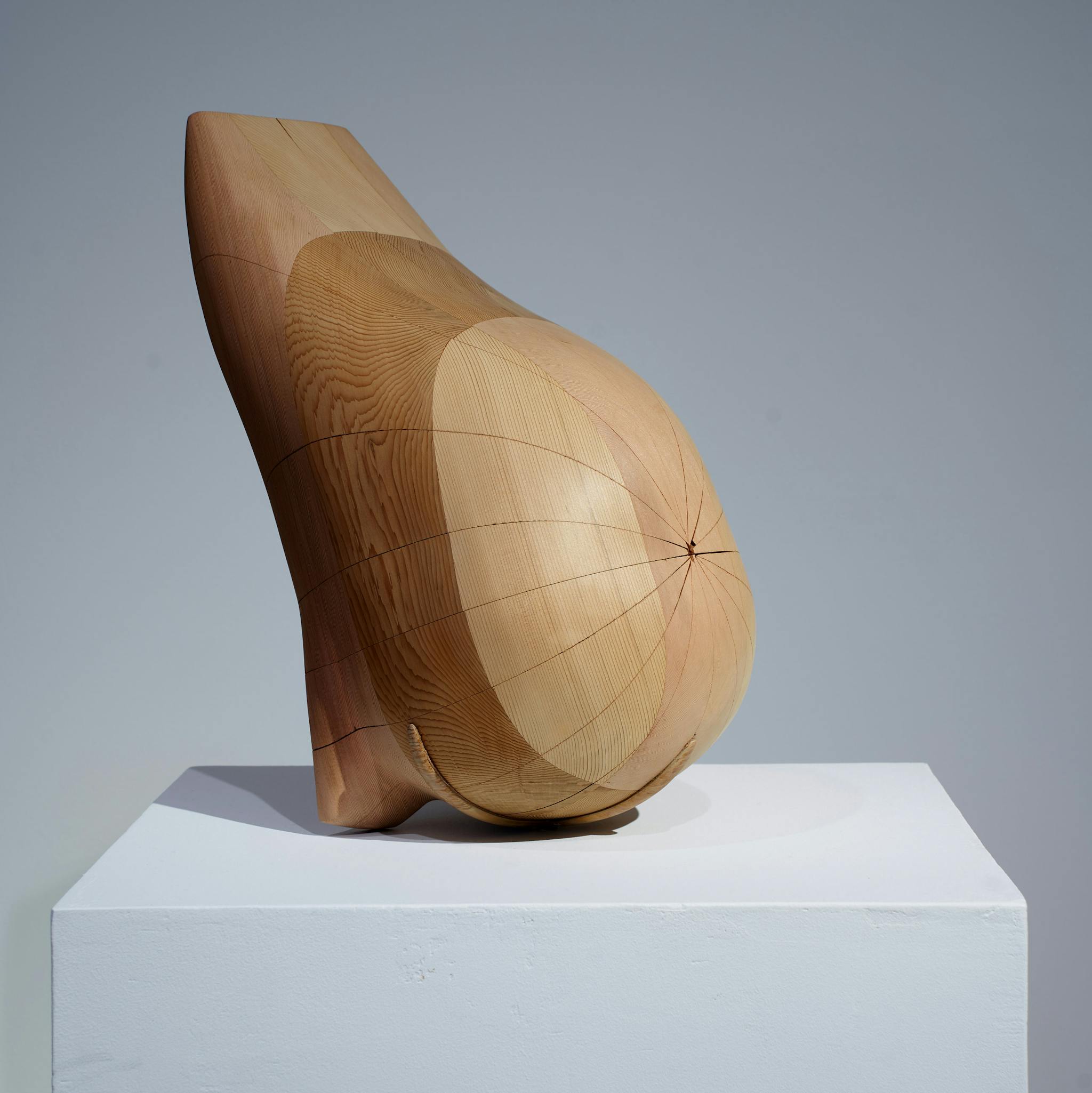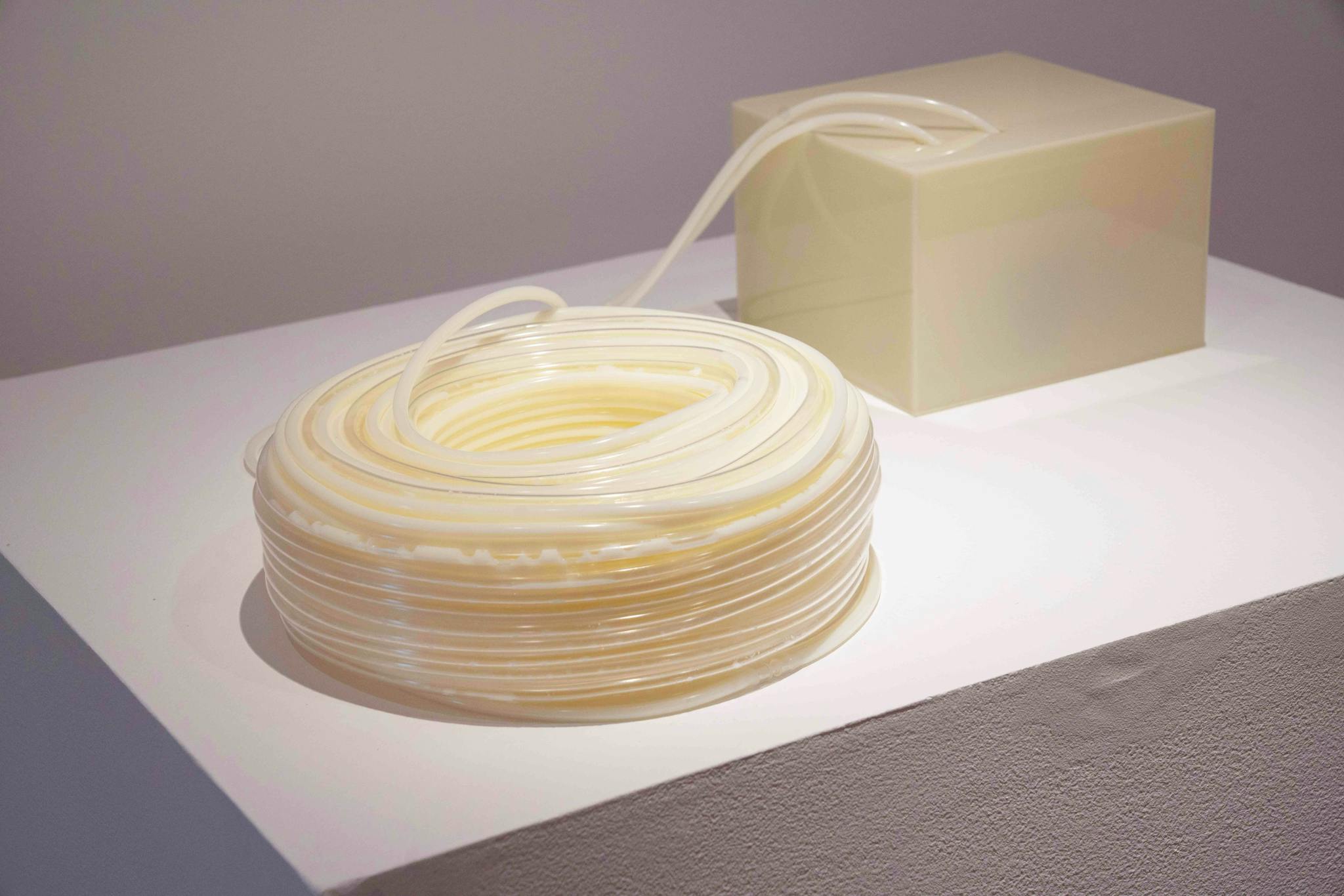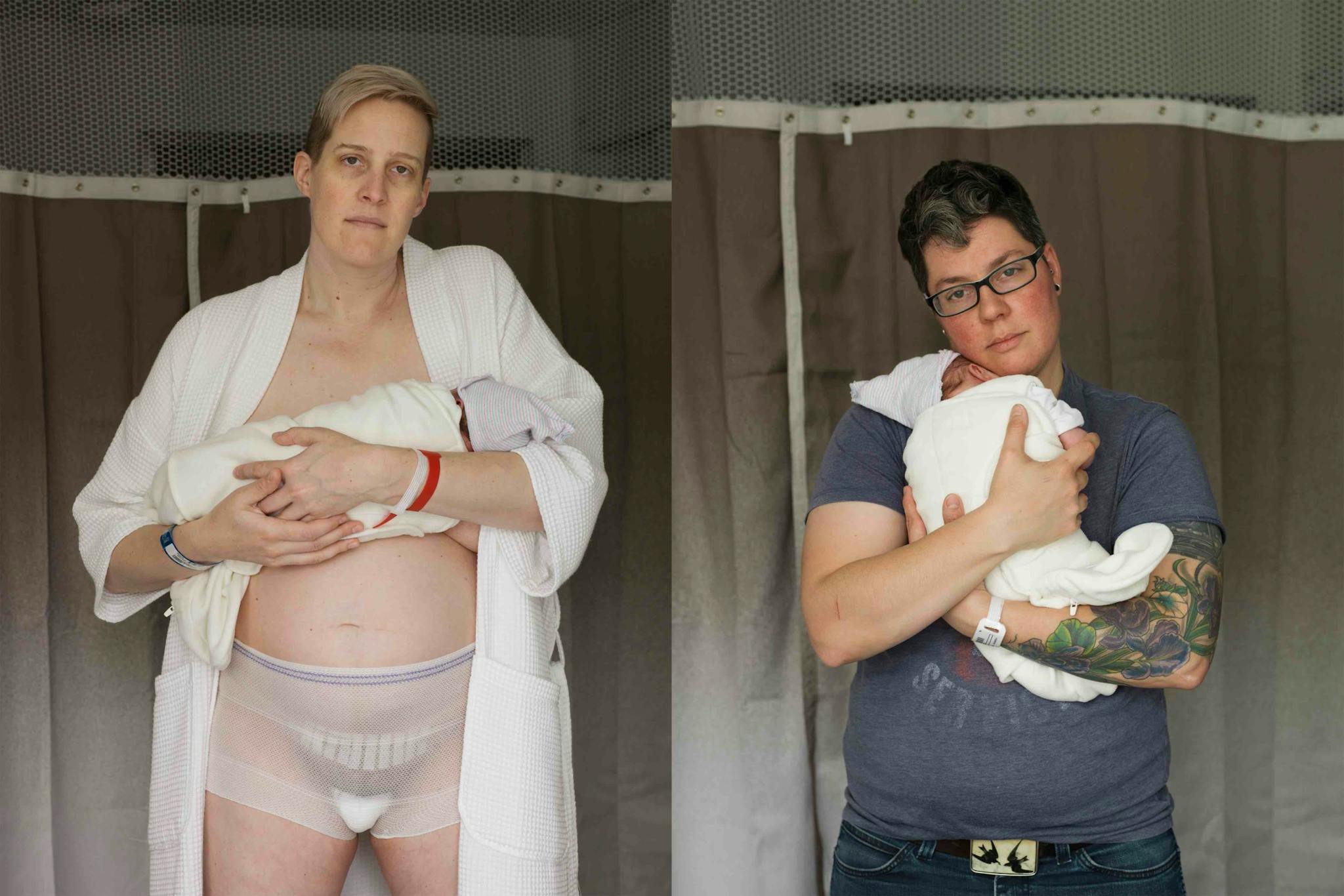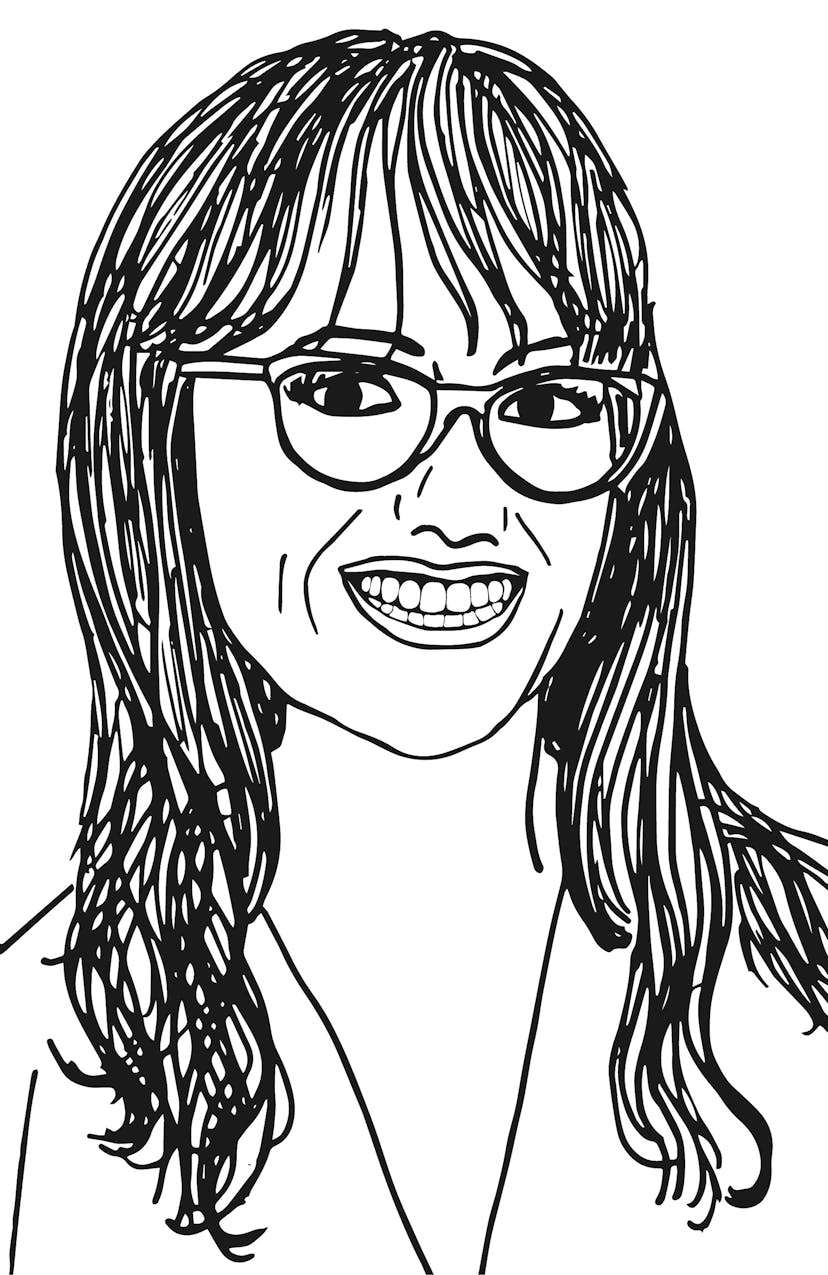Days before the Supreme Court overturned Roe v. Wade, leaving state legislatures free to assign personhood to clusters of cells and deny it to women and girls and trans people, “Designing Motherhood: Things That Make and Break Our Births” opened at the MassArt Art Museum. To say the exhibition feels urgent is an understatement. Curated by a team that includes project cofounders Michelle Millar Fisher, a decorative arts curator at Boston’s Museum of Fine Arts, and design historian Amber Winick—who’ve been sharing their finds on the @designingmotherhood Instagram account since 2019—as well as Juliana Rowen Barton, director of Northeastern’s Center for the Arts, the show features nearly two hundred objects, ranging from nineteenth-century artifacts to cutting-edge prototypes and contemporary art from the likes of LaToya Ruby Frazier and Deb Willis. Among the designs are speculums and stirrups, breast pumps and pessaries, a birthing stool and a baby stroller, diaphragms and IUDs, pamphlets and posters, menstrual cups and maternity wear, an at-home abortion device and dozens of other implements and products related to a realm of human experience that is universal—everybody is born!—but often overlooked. It’s a panoply that puts both injustice and ingenuity on full display; we see failings of a medical establishment and a commercial culture too often rife with misogyny, racism, and ableism as well as progress driven by grassroots organizers, upstart designers, and devoted midwives, doctors, and nurses. I had a chance to delve into many of these items when I reviewed the exhibition’s companion book last fall, so here, I wanted to take a closer look at some of the art on view, homing in on recent works by three artists with local ties.
Online Only• Jul 19, 2022
At MAAM, “Designing Motherhood” Delves Into the Universal yet Deeply Personal Experience of Birth
“It’s a panoply that puts both injustice and ingenuity on full display” writes Houton in her review that turns a lens to artists with ties to Boston included in this 200+ object exhibition.
Review by Jacqueline Houton
Installation view, "Designing Motherhood: Things That Make and Break Our Births," MassArt Art Museum, 2022. Photo by Yukai Chen M’23.

Installation view, "Designing Motherhood: Things That Make and Break Our Births," MassArt Art Museum, 2022. Photo by Yukai Chen M’23.

Alison Croney Moses, My Belly, 2021. Part of the series My Black Body. Cedar wood, milk paint. Commissioned for the Designing Motherhood exhibition by the Maternity Care Coalition Advisors. Courtesy the artist. Photo by Stephen Tourlentes.
Alison Croney Moses, a Boston-based, RISD-trained artist who serves as associate director of Jamaica Plain’s Eliot School of Fine & Applied Arts, works in wood, a material that seems wholly alive in her sculptures. Her piece My Belly (2021), from the series My Black Body, is a gorgeous work of craft, the contrasting wood grains coming together to form graceful curves, the cedar rendered supple and smooth and given a subtle gleam with milk paint. Yet the component pieces don’t meet perfectly in the middle—a fitting metaphor for a process that reorganizes internal organs, impacts every system of the body, and can be particularly perilous for Black women in this country, who are three times more likely to die during pregnancy or childbirth than white women. What’s more, that visual of coming apart at the seams is apt not only in the context of pregnancy, but after, as mothers are forced to puzzle out what to do when old parts of their lives refuse to dovetail with the new. Community can be crucial in these moments, a truth underscored by We Are Black Vessels (2021), a four-minute video on view nearby. It documents a retreat Moses organized in June of 2021, gathering ten Black mothers for a weekend of meditation and movement. That session helped spark a new project, Un-ADULT-erated Black Joy, which has Moses and collaborators hosting celebrations for other Black mothers in the broader Boston community—complete with hula hooping, hopscotch, hand clapping, and other pleasures from childhood—and using these experiences as fuel for further work.

Ani Liu, Untitled (pumping), 2022. Technical advising by William Liu and Julian Goldman. Food grade tubing, liquid pump, air pump, steel bracket, brass tube adapters, hose clamps, valve adapters, valve splitters, solenoid valve, microcontroller, synthetic milk. Courtesy the artist. Photo by Yukai Chen M’23.

Ani Liu, Untitled (labor of love), 2022. Data containing the first 30 days of feedings and diaper changes in caring for Liu’s newborn. Vinyl. Courtesy the artist. Photo by Yukai Chen M’23.
While Moses plies traditional woodworking techniques, a few feet away, MIT alum Ani Liu leans into the futuristic. Liu’s sci-fi-inflected art fuses biology and technology, toggling from playful to unnerving and back again—past projects have included Mind-Controlled Spermatozoa, which employed an EEG and electric fields to allow women to move the little guys on a glass slide, and Real Virtual Feelings, a sculpture programmed to emit a drop of dopamine for each like received on social media. Like many Americans (nearly a quarter of whom return to work within two weeks of giving birth), Liu received no parental leave, having started a new professorship the month her son was born, and she soon was spending hours with her breast pump. Here, in the sculpture Untitled (pumping) (2022), 5.85 gallons of synthetic milk circulate between a vitrine and a coil of tubing, representing the amount of breast milk she produces to feed her infant son in one month. Stand close enough and you can hear the mechanical rhythm of the pump at work within the vitrine, a motorized heartbeat that, the artist notes, now triggers her let-down reflex. It’s a piece that reframes a familiar routine as a kind of everyday cyborgism. “I feel a certain intimacy with my pump,” Liu observes in the exhibition’s accompanying text, “and in a way, it allows my body to feed through space and time.” Of course, pumping, and breastfeeding generally, demands a staggering investment of time, as an adjacent companion piece, Untitled (labor of love), makes clear. The work charts feedings and diaper changes for the first month of her son’s life—a reminder that breast milk is only “free” if a mother’s time has no value. Just as the work of the pump is obscured within the vitrine, this labor goes largely unseen.

Jess Dugan, Vanessa and Jess with Elinor (2 days old), 2018. Archival inkjet print. Courtesy the artist.
MassArt alum Jess T. Dugan’s Vanessa and Jess with Elinor (2 days old) (2018) likewise brings the unseen into relief. The diptych is part of the series Family Pictures, in which Dugan creates representations of queer kinship through photos of themself, their mother, their spouse, and their daughter. On view for the first time, these two images were impromptu ones, captured during a quiet moment in their hospital room. First Dugan photographed Vanessa with their newborn, and then Vanessa suggested they take a self-portrait, too. Vanessa’s robe is parted to reveal hospital-issued disposable mesh underwear, designed to prevent pressure on tender flesh; visible beneath it is a thick maxi pad for absorbing postpartum bleeding and a row of Steri-Strips over a cesarean incision. I was surprised to feel tears well up as I stood in front of that photograph. I think I was moved simply because I’d never seen an image like it, and I wished I’d seen it sooner. After I delivered my own daughter by C-section in January, I didn’t have any visual frame of reference to prepare me for my first tentative look in the mirror. Cesarean sections are the world’s most frequently performed surgery, accounting for nearly a third of births in the United States, but they feel hidden, like many aspects of motherhood. “Designing Motherhood” affords these experiences the attention they deserve and affirms their importance to the public sphere. And it showcases artists who have not only managed to carve out space for creative work amid care work, but used their roles as parents as inspiration for their art. I wrote this piece while pumping for my six-month-old, and this year I have sometimes doubted whether I’m capable of deep thought—OK, even coherent thought—in tiny pockets of time on short sleep. But these works give me a renewed sense of what’s possible and remind me, too, that caring for a child is itself creative work, a project demanding improvisation and imagination and wild hope for a better world.
“Designing Motherhood: Things That Make and Break Our Births” is on view at MassArt Art Museum through December 18.
